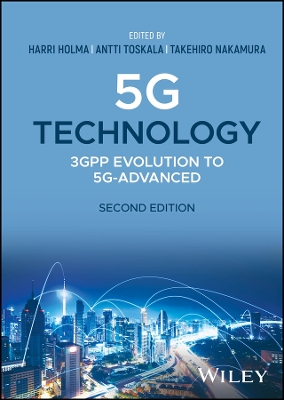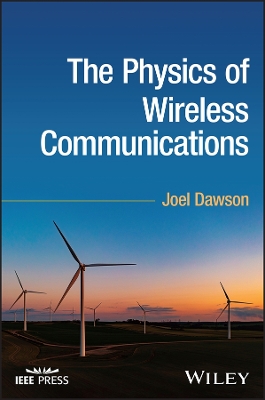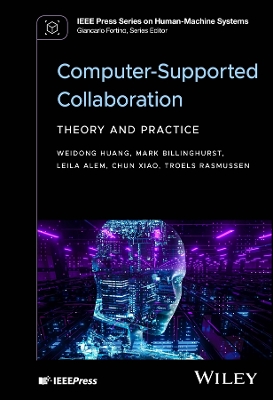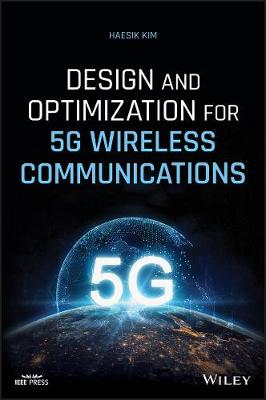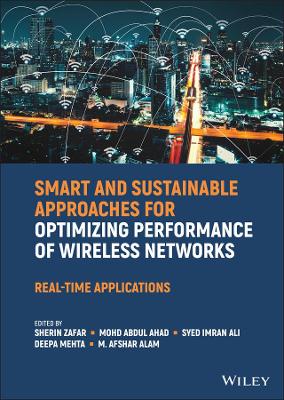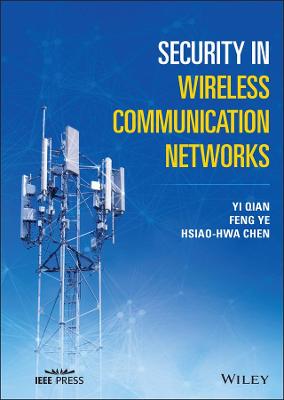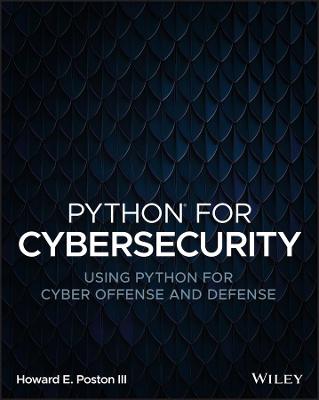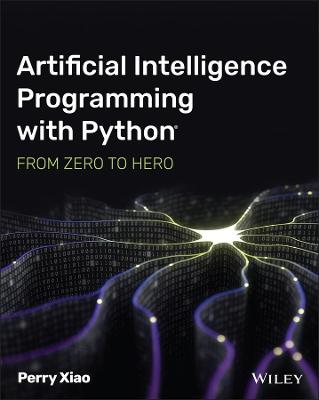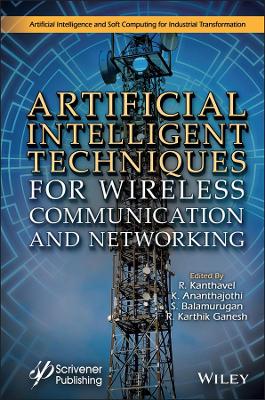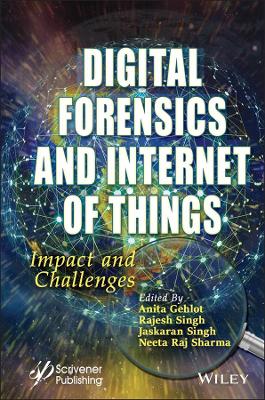From 5G to 6G
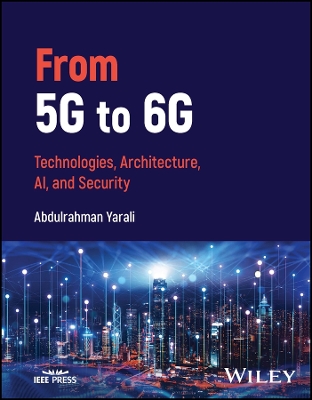 -15%
portes grátis
-15%
portes grátis
From 5G to 6G
Technologies, Architecture, AI, and Security
Yarali, Abdulrahman
John Wiley & Sons Inc
08/2023
224
Dura
Inglês
9781119883081
15 a 20 dias
666
Preface xv
1 Technologies and Development for the Next Information Age 1
1.1 Introduction 1
1.2 Roadmap to 6G 1
1.2.1 Society 5.0 4
1.2.2 Extended Reality 4
1.2.3 Wireless Brain-Computer 5
1.2.4 Haptic Communication 5
1.2.5 Smart Healthcare 5
1.2.6 Five-Sense Information 6
1.2.7 The Internet of Everything 6
1.2.8 5G to 6G 6
1.3 AI and Cybersecurity: Paving the Way for the Future 10
1.4 Fusion of IoT, AI, and Cybersecurity 10
1.4.1 Where Did AI Begin? 12
1.4.2 Role of AI 12
1.4.3 Disadvantages of AI 12
1.4.4 Advantages of AI 12
1.4.5 Threats from Hackers 14
1.5 How AI Can Help Solve These Problems 15
1.6 Connected Devices and Cybersecurity 16
1.7 Solutions for Data Management in Cybersecurity 17
1.8 Conclusion 17
References 18
2 Networks of the Future 21
2.1 Introduction 21
2.2 The Motive for Energy-Efficient ICTs 22
2.2.1 Approaches 23
2.3 Wireless Networks 24
2.3.1 Wi-Fi 26
2.3.2 Lte 28
2.3.3 Heterogeneous Networks 29
2.3.4 Femtocell Repeater 29
2.3.5 The Dawn of 5G Wireless Systems 30
2.3.6 Advancing from 5G to 6G Networks 32
2.4 Cognitive Networking 33
2.4.1 Zero-Touch Network and Service Management 34
2.4.2 Zero-Trust Networking 35
2.4.3 Information-Centric Networking 35
2.4.3.1 Basic Concepts of ICN 36
2.4.4 In-Network Computing 36
2.4.5 Active Networking 36
2.5 Mobile Edge Computing 37
2.6 Quantum Communications 37
2.6.1 Quantum Computing and 6G Wireless 38
2.7 Cybersecurity of 6G 38
2.8 Massive Machine-Type Communications (MTC) 39
2.9 Edge-Intelligence and Pervasive Artificial Intelligence in 6G 40
2.10 Blockchain: Foundations and Role in 6G 40
2.11 Role of Open-Source Platforms in 6G 40
2.11.1 PHY Technologies for 6G Wireless 40
2.11.2 Reconfigurable Intelligent Surface for 6G Wireless Networks 41
2.11.3 Millimeter-Wave and Terahertz Spectrum for 6G Wireless 41
2.11.4 Challenges in Transport Layer for Terabit Communications 41
2.11.5 High-Capacity Backhaul Connectivity for 6G Wireless 42
2.11.6 Cloud-Native Approach for 6G Wireless Networks 42
2.11.7 Machine Type Communications in 6G 42
2.11.8 Impact of 5G and 6G on Health and Environment 42
2.12 Integration of 5G with AI and IoT and Roadmap to 6G 43
2.13 3gpp 47
2.14 Conclusion 49
References 49
3 The Future of Wireless Communication with 6G 53
3.1 Introduction 53
3.2 Recent Trends Leading to 6G Technology Evolution 53
3.3 Security and Privacy Challenges in 6G Wireless Communications 53
3.4 The Impact of 6G on Healthcare Systems 56
3.5 The Impact of 6G on Space Technology and Satellite Communication 58
3.6 The Impact of 6G on Other Industries 60
3.7 Terahertz Wireless Systems and Networks with 6G 61
3.8 The Future of 6G and Its Role in IT 62
References 62
4 Artificial Intelligence and Machine Learning in the Era of 5G and 6G Technology 65
4.1 Artificial Intelligence and Machine Learning: Definitions, Applications, and Challenges 66
4.1.1 Application of Machine Learning and Artificial Intelligence 66
4.1.2 Challenges for Machine Learning and Artificial Intelligence 66
4.2 Artificial Intelligence: Laws, Regulations, and Ethical Issues 67
4.2.1 Ethical Governance in Artificial Intelligence 67
4.2.2 The Future of Regulation for AI 67
4.3 Potentials of Artificial Intelligence in Wireless 5G and 6G: Benefits and Challenges 68
4.3.1 Artificial Intelligence in Wireless 5G and 6G 68
4.3.2 Benefits and Challenges of AI in 5G and 6G 68
4.3.3 How Can AI Be Used to Enhance 6G Wireless Security? 68
4.3.4 The 6G Era's Edge Intelligence and Cloudification 69
4.3.5 Distributed Artificial Intelligence in 6G Security 69
4.4 Cybersecurity Issues in Advanced 5G and 6G 70
4.5 Benefits and Challenges of Using AI in Cybersecurity: Help or Hurt? 70
4.6 How Can AI Be Used by Hackers Attacking Networks? 71
4.7 Conclusion 72
References 72
5 6G Wireless Communication Systems: Emerging Technologies, Architectures, Challenges, and Opportunities 73
5.1 Introduction 73
5.2 Important Aspects of Sixth-Generation Communication Technology 73
5.2.1 A Much Higher Data Rate 74
5.2.2 A Much Lower Latency 74
5.2.3 Network Reliability and Accuracy 74
5.2.4 Energy Efficiency 74
5.2.5 Focus on Machines as Primary Users 74
5.2.6 AI Wireless Communication Tools 74
5.2.7 Personalized Network Experience 74
5.3 Enabling Technologies Behind the Drive for 6G 76
5.3.1 Artificial Intelligence 76
5.3.2 Terahertz Communications 78
5.3.3 Optical Wireless Technology 78
5.4 Extreme Performance Technologies in 6G Connectivity 79
5.4.1 Quantum Communication and Quantum ml 79
5.4.2 Blockchain 80
5.4.2.1 Internal Network Operations 80
5.4.2.2 Ecosystem for Productive Collaboration 80
5.4.2.3 Tactile Internet 80
5.4.2.4 Spectrum Sharing (FDSS) and Free Duplexing 80
5.5 6G Communications Using Intelligent Platforms 81
5.5.1 Integrated Intelligence 82
5.5.2 Satellite-Based Integrated Network 82
5.5.3 Wireless Information and Energy Transfer Are Seamlessly Integrated 83
5.6 Artificial Intelligence and a Data-Driven Approach to Networks 83
5.6.1 Zero-Touch Network 84
5.6.2 AI by Design 85
5.6.3 Technological Fundamentals for Zero-Touch Systems 85
5.7 Sensing for 6G 85
5.7.1 A Bandwidth as Well as Carrier Frequency Rise 85
5.7.2 Chip Technologies of the Future 86
5.7.3 Models of Consistent Channels 86
5.7.4 X-Haul and Transport Network for 6G 87
5.8 Applications 87
5.9 Innovative 6G Network Architectures 89
5.10 Conclusion 89
References 90
6 6G: Architecture, Applications, and Challenges 91
6.1 Introduction 91
6.2 6G Network Architecture Vision 93
6.2.1 6G Use Cases, Requirements, and Metrics 94
6.2.2 What 5G Is Currently Covering 95
6.3 6th Generation Networks: A Step Beyond 5G 97
6.3.1 6G and the Fundamental Features 98
6.4 Emerging Applications of 6G Wireless Networks 99
6.4.1 Virtual, Augmented, and Mixed Reality 99
6.4.2 Holographic Telepresence 100
6.4.3 Automation: The Future of Factories 101
6.4.4 Smart Lifestyle with the Integration of the Internet of Things 101
6.4.5 Autonomous Driving and Connected Devices 101
6.4.6 Healthcare 101
6.4.7 Nonterrestrial Communication 101
6.4.8 Underwater Communication 102
6.4.9 Disaster Management 102
6.4.10 Environment 102
6.5 The Requirements and KPI Targets of 6G 102
6.5.1 Extremely Low Latency 102
6.5.2 Low Power Consumption 102
6.5.3 High Data Rates 103
6.5.4 High-Frequency Bands 103
6.5.5 Ultra-Reliability 103
6.5.6 Security and Privacy 103
6.5.7 Massive Connection Density 104
6.5.8 Extreme Coverage Extension 104
6.5.9 Mobility 104
6.6 6G Applications 104
6.7 Challenges in 6G: Standardization, Design, and Deployment 104
References 106
7 Cybersecurity in Digital Transformation Era: Security Risks and Solutions 109
7.1 Introduction 109
7.2 Digital Transformation and Mesh Networks of Networks 109
7.3 Security as the Enemy of Digital Transformation 111
7.4 The Current State of Cybercrime 113
7.5 Security and Technologies of the Digital Transformation Economy 115
7.6 Tackling the Cybersecurity Maturity Challenges to Succeed with Digital Transformation 116
7.7 Security Maturity and Optimization: Perception versus Reality 117
7.7.1 Why Cybersecurity Maturity Is Not What It Should Be in the Digital Business and Transformation Reality 118
7.7.2 Why Cybersecurity Maturity and Strategy Are Lagging 119
7.8 Changing Security Parameters and Cyber Risks Demand a Holistic Security Approach for Digital Business 120
7.9 Cybersecurity Challenges and Digital Risks for the Future 121
7.10 Conclusion 122
References 122
8 Next Generations Networks: Integration, Trustworthiness, Privacy, and Security 125
8.1 Introduction 125
8.2 The State of 5G Networks 127
8.2.1 Applications and Services of 5G Technologies 128
8.3 6G: Key Technologies 130
8.4 6G: Application and Services 134
8.5 Benefits of 6G over 5G: A Comparison 135
8.5.1 Artificial Intelligence in 5G and 6G: Benefits and Challenges 135
8.5.2 Artificial Intelligence and Cybersecurity 136
8.5.3 Benefits and Challenges of AI and 6G for Cybersecurity as Defense and Offense 136
8.6 6G: Integration and Roadmap 137
8.7 Key Words in Safeguarding 6G 137
8.7.1 Trust 137
8.7.2 Security 137
8.7.3 Privacy 138
8.8 Trustworthiness in 6G 138
8.8.1 Is Trust Networking Needed? 138
8.8.2 Benefits of Trust Networking for 6G 138
8.8.3 Constraints of Trust Networking in 6G 138
8.8.4 Principles for Trust Networking 139
8.8.5 Challenges in Trust Networking for 6G 139
8.9 Network Security Architecture for 6G 140
8.9.1 Privacy and Security in IoT for 6G 140
8.10 6G Wireless Systems 141
8.10.1 Advances 141
8.10.2 Physical Layer Security as a Means of Confidentiality 142
8.10.3 Challenges of Implementing Federated Learning 143
8.10.4 Physical Layer Security for Six-Generation Connectivity 143
8.10.5 Physical Layer Security Using Light Communications 144
8.10.6 Challenges for Physical Layer Security 144
8.10.7 Privacy Requirements for 6G 145
8.10.8 Is Personal Information Really Personal? 145
8.11 Fifth Generation vs. Sixth Generation 145
8.12 Conclusion 146
References 147
9 Artificial Intelligence: Cybersecurity and Security Threats 149
9.1 Introduction 149
9.2 5G and 6G 150
9.3 Cybersecurity in Its Current State 151
9.4 AI as a Concept 153
9.5 AI: A Solution for Cybersecurity 154
9.6 AI: New Challenges in Cybersecurity 154
9.7 Conclusion 156
References 156
10 Impact of Artificial Intelligence and Machine Learning on Cybersecurity 159
10.1 Introduction 159
10.2 What Is Artificial Intelligence (AI)? 160
10.2.1 Reactive Machines 160
10.2.2 Limited Memory 160
10.2.3 Theory of Mind 160
10.2.4 Self-Awareness 161
10.3 The Transformative Power of AI 161
10.4 Understanding the Relationship Between AI and Cybersecurity 161
10.5 The Promise and Challenges of AI for Cybersecurity 162
10.5.1 Risks and Impacts of AI on Cybersecurity (Threats and Solutions) 163
10.5.1.1 Domestic Risks 164
10.5.1.2 Local Risks 164
10.5.1.3 National Risks 164
10.5.1.4 Why Prediction and Prevention 164
10.6 Broad Domain of AI Security (Major Themes in the AI Security Landscape) 164
10.6.1 Digital/Physical 165
10.6.2 Protection from Malicious Use of AI and Automated Cyberattacks 165
10.6.3 Other Technologies with AI and Their Integration 165
10.6.4 Political 165
10.6.5 Manipulation and Disinformation Protection 165
10.6.6 Infrastructure Based on AI and Digital Expertise of Government 166
10.6.6.1 Economic 166
10.6.6.2 Labor Displacement and Its Mitigation 166
10.6.6.3 Promotion of AI R&D 166
10.6.6.4 Education and Training That Is Updated 167
10.7 Transparency of Artificial Intelligence and Accountability Societal Aspects 167
10.7.1 Rights of Privacy and Data 167
10.8 Global AI Security Priorities 168
10.8.1 Global Economy 168
10.8.2 Global Privacy and Data Rights 168
10.8.2.1 AI and Ethics 169
10.8.3 Automation of Cyberattacks or Social Engineering Attacks 170
10.8.4 Target Prioritizing with Machine Learning 170
10.9 Automation of Services in Cybercriminal Offense 170
10.9.1 Increased Scale of Attacks 170
10.10 The Future of AI in Cybersecurity 171
10.11 Conclusion 171
References 172
11 AI and Cybersecurity: Paving the Way for the Future 175
11.1 Introduction 175
11.2 IoT Security and the Role of AI 176
11.3 Cybercrime and Cybersecurity 179
11.4 How Can AI Help Solve These Problems? 181
11.5 The Realm of Cyberspace 181
11.6 Connected Devices and Cybersecurity 182
11.7 Solutions for Data Management in Cybersecurity 183
11.8 Conclusion 183
References 184
12 Future 6G Networks 185
12.1 Introduction 185
12.2 Vision, Challenges, and Key Features for Future 6G Networks 186
12.2.1 Fourth Generation Long-Term Evolution (4G-LTE) 187
12.3 Rationale for 6G Networks with Prevailing and Future Success of 5G 188
12.4 Missing Units from LTE and 5G That 6G Will Integrate 189
12.5 Features of 6G Networks 189
12.5.1 Large Bandwidth 189
12.5.2 Artificial Intelligence 189
12.5.3 Operational Intelligence 190
12.6 Wireless Networks 190
12.6.1 Beyond 5G and Toward 6G 190
12.6.2 Visible-Light Communications 191
12.6.3 E-MBB Plus 191
12.6.4 Big Communications 191
12.6.5 Secure Ultra-Reliable Low-Latency Communications 192
12.6.6 Three-Dimensional Integrated Communications 192
12.6.7 Underwater Communication 193
12.6.8 Space Communication 194
12.6.9 UAV-Based Communication 194
12.6.10 Unconventional Data Communications 194
12.6.11 Tactical Communications 195
12.6.12 Holographic Communications 195
12.6.13 Human-Bond Communications 196
12.7 Challenges for 6G Networks 196
12.7.1 Potential Health Issues 196
12.7.2 Security and Privacy Concerns 197
12.7.3 Research Activities and Trends 197
12.8 Conclusion 198
References 200
Index 203
Preface xv
1 Technologies and Development for the Next Information Age 1
1.1 Introduction 1
1.2 Roadmap to 6G 1
1.2.1 Society 5.0 4
1.2.2 Extended Reality 4
1.2.3 Wireless Brain-Computer 5
1.2.4 Haptic Communication 5
1.2.5 Smart Healthcare 5
1.2.6 Five-Sense Information 6
1.2.7 The Internet of Everything 6
1.2.8 5G to 6G 6
1.3 AI and Cybersecurity: Paving the Way for the Future 10
1.4 Fusion of IoT, AI, and Cybersecurity 10
1.4.1 Where Did AI Begin? 12
1.4.2 Role of AI 12
1.4.3 Disadvantages of AI 12
1.4.4 Advantages of AI 12
1.4.5 Threats from Hackers 14
1.5 How AI Can Help Solve These Problems 15
1.6 Connected Devices and Cybersecurity 16
1.7 Solutions for Data Management in Cybersecurity 17
1.8 Conclusion 17
References 18
2 Networks of the Future 21
2.1 Introduction 21
2.2 The Motive for Energy-Efficient ICTs 22
2.2.1 Approaches 23
2.3 Wireless Networks 24
2.3.1 Wi-Fi 26
2.3.2 Lte 28
2.3.3 Heterogeneous Networks 29
2.3.4 Femtocell Repeater 29
2.3.5 The Dawn of 5G Wireless Systems 30
2.3.6 Advancing from 5G to 6G Networks 32
2.4 Cognitive Networking 33
2.4.1 Zero-Touch Network and Service Management 34
2.4.2 Zero-Trust Networking 35
2.4.3 Information-Centric Networking 35
2.4.3.1 Basic Concepts of ICN 36
2.4.4 In-Network Computing 36
2.4.5 Active Networking 36
2.5 Mobile Edge Computing 37
2.6 Quantum Communications 37
2.6.1 Quantum Computing and 6G Wireless 38
2.7 Cybersecurity of 6G 38
2.8 Massive Machine-Type Communications (MTC) 39
2.9 Edge-Intelligence and Pervasive Artificial Intelligence in 6G 40
2.10 Blockchain: Foundations and Role in 6G 40
2.11 Role of Open-Source Platforms in 6G 40
2.11.1 PHY Technologies for 6G Wireless 40
2.11.2 Reconfigurable Intelligent Surface for 6G Wireless Networks 41
2.11.3 Millimeter-Wave and Terahertz Spectrum for 6G Wireless 41
2.11.4 Challenges in Transport Layer for Terabit Communications 41
2.11.5 High-Capacity Backhaul Connectivity for 6G Wireless 42
2.11.6 Cloud-Native Approach for 6G Wireless Networks 42
2.11.7 Machine Type Communications in 6G 42
2.11.8 Impact of 5G and 6G on Health and Environment 42
2.12 Integration of 5G with AI and IoT and Roadmap to 6G 43
2.13 3gpp 47
2.14 Conclusion 49
References 49
3 The Future of Wireless Communication with 6G 53
3.1 Introduction 53
3.2 Recent Trends Leading to 6G Technology Evolution 53
3.3 Security and Privacy Challenges in 6G Wireless Communications 53
3.4 The Impact of 6G on Healthcare Systems 56
3.5 The Impact of 6G on Space Technology and Satellite Communication 58
3.6 The Impact of 6G on Other Industries 60
3.7 Terahertz Wireless Systems and Networks with 6G 61
3.8 The Future of 6G and Its Role in IT 62
References 62
4 Artificial Intelligence and Machine Learning in the Era of 5G and 6G Technology 65
4.1 Artificial Intelligence and Machine Learning: Definitions, Applications, and Challenges 66
4.1.1 Application of Machine Learning and Artificial Intelligence 66
4.1.2 Challenges for Machine Learning and Artificial Intelligence 66
4.2 Artificial Intelligence: Laws, Regulations, and Ethical Issues 67
4.2.1 Ethical Governance in Artificial Intelligence 67
4.2.2 The Future of Regulation for AI 67
4.3 Potentials of Artificial Intelligence in Wireless 5G and 6G: Benefits and Challenges 68
4.3.1 Artificial Intelligence in Wireless 5G and 6G 68
4.3.2 Benefits and Challenges of AI in 5G and 6G 68
4.3.3 How Can AI Be Used to Enhance 6G Wireless Security? 68
4.3.4 The 6G Era's Edge Intelligence and Cloudification 69
4.3.5 Distributed Artificial Intelligence in 6G Security 69
4.4 Cybersecurity Issues in Advanced 5G and 6G 70
4.5 Benefits and Challenges of Using AI in Cybersecurity: Help or Hurt? 70
4.6 How Can AI Be Used by Hackers Attacking Networks? 71
4.7 Conclusion 72
References 72
5 6G Wireless Communication Systems: Emerging Technologies, Architectures, Challenges, and Opportunities 73
5.1 Introduction 73
5.2 Important Aspects of Sixth-Generation Communication Technology 73
5.2.1 A Much Higher Data Rate 74
5.2.2 A Much Lower Latency 74
5.2.3 Network Reliability and Accuracy 74
5.2.4 Energy Efficiency 74
5.2.5 Focus on Machines as Primary Users 74
5.2.6 AI Wireless Communication Tools 74
5.2.7 Personalized Network Experience 74
5.3 Enabling Technologies Behind the Drive for 6G 76
5.3.1 Artificial Intelligence 76
5.3.2 Terahertz Communications 78
5.3.3 Optical Wireless Technology 78
5.4 Extreme Performance Technologies in 6G Connectivity 79
5.4.1 Quantum Communication and Quantum ml 79
5.4.2 Blockchain 80
5.4.2.1 Internal Network Operations 80
5.4.2.2 Ecosystem for Productive Collaboration 80
5.4.2.3 Tactile Internet 80
5.4.2.4 Spectrum Sharing (FDSS) and Free Duplexing 80
5.5 6G Communications Using Intelligent Platforms 81
5.5.1 Integrated Intelligence 82
5.5.2 Satellite-Based Integrated Network 82
5.5.3 Wireless Information and Energy Transfer Are Seamlessly Integrated 83
5.6 Artificial Intelligence and a Data-Driven Approach to Networks 83
5.6.1 Zero-Touch Network 84
5.6.2 AI by Design 85
5.6.3 Technological Fundamentals for Zero-Touch Systems 85
5.7 Sensing for 6G 85
5.7.1 A Bandwidth as Well as Carrier Frequency Rise 85
5.7.2 Chip Technologies of the Future 86
5.7.3 Models of Consistent Channels 86
5.7.4 X-Haul and Transport Network for 6G 87
5.8 Applications 87
5.9 Innovative 6G Network Architectures 89
5.10 Conclusion 89
References 90
6 6G: Architecture, Applications, and Challenges 91
6.1 Introduction 91
6.2 6G Network Architecture Vision 93
6.2.1 6G Use Cases, Requirements, and Metrics 94
6.2.2 What 5G Is Currently Covering 95
6.3 6th Generation Networks: A Step Beyond 5G 97
6.3.1 6G and the Fundamental Features 98
6.4 Emerging Applications of 6G Wireless Networks 99
6.4.1 Virtual, Augmented, and Mixed Reality 99
6.4.2 Holographic Telepresence 100
6.4.3 Automation: The Future of Factories 101
6.4.4 Smart Lifestyle with the Integration of the Internet of Things 101
6.4.5 Autonomous Driving and Connected Devices 101
6.4.6 Healthcare 101
6.4.7 Nonterrestrial Communication 101
6.4.8 Underwater Communication 102
6.4.9 Disaster Management 102
6.4.10 Environment 102
6.5 The Requirements and KPI Targets of 6G 102
6.5.1 Extremely Low Latency 102
6.5.2 Low Power Consumption 102
6.5.3 High Data Rates 103
6.5.4 High-Frequency Bands 103
6.5.5 Ultra-Reliability 103
6.5.6 Security and Privacy 103
6.5.7 Massive Connection Density 104
6.5.8 Extreme Coverage Extension 104
6.5.9 Mobility 104
6.6 6G Applications 104
6.7 Challenges in 6G: Standardization, Design, and Deployment 104
References 106
7 Cybersecurity in Digital Transformation Era: Security Risks and Solutions 109
7.1 Introduction 109
7.2 Digital Transformation and Mesh Networks of Networks 109
7.3 Security as the Enemy of Digital Transformation 111
7.4 The Current State of Cybercrime 113
7.5 Security and Technologies of the Digital Transformation Economy 115
7.6 Tackling the Cybersecurity Maturity Challenges to Succeed with Digital Transformation 116
7.7 Security Maturity and Optimization: Perception versus Reality 117
7.7.1 Why Cybersecurity Maturity Is Not What It Should Be in the Digital Business and Transformation Reality 118
7.7.2 Why Cybersecurity Maturity and Strategy Are Lagging 119
7.8 Changing Security Parameters and Cyber Risks Demand a Holistic Security Approach for Digital Business 120
7.9 Cybersecurity Challenges and Digital Risks for the Future 121
7.10 Conclusion 122
References 122
8 Next Generations Networks: Integration, Trustworthiness, Privacy, and Security 125
8.1 Introduction 125
8.2 The State of 5G Networks 127
8.2.1 Applications and Services of 5G Technologies 128
8.3 6G: Key Technologies 130
8.4 6G: Application and Services 134
8.5 Benefits of 6G over 5G: A Comparison 135
8.5.1 Artificial Intelligence in 5G and 6G: Benefits and Challenges 135
8.5.2 Artificial Intelligence and Cybersecurity 136
8.5.3 Benefits and Challenges of AI and 6G for Cybersecurity as Defense and Offense 136
8.6 6G: Integration and Roadmap 137
8.7 Key Words in Safeguarding 6G 137
8.7.1 Trust 137
8.7.2 Security 137
8.7.3 Privacy 138
8.8 Trustworthiness in 6G 138
8.8.1 Is Trust Networking Needed? 138
8.8.2 Benefits of Trust Networking for 6G 138
8.8.3 Constraints of Trust Networking in 6G 138
8.8.4 Principles for Trust Networking 139
8.8.5 Challenges in Trust Networking for 6G 139
8.9 Network Security Architecture for 6G 140
8.9.1 Privacy and Security in IoT for 6G 140
8.10 6G Wireless Systems 141
8.10.1 Advances 141
8.10.2 Physical Layer Security as a Means of Confidentiality 142
8.10.3 Challenges of Implementing Federated Learning 143
8.10.4 Physical Layer Security for Six-Generation Connectivity 143
8.10.5 Physical Layer Security Using Light Communications 144
8.10.6 Challenges for Physical Layer Security 144
8.10.7 Privacy Requirements for 6G 145
8.10.8 Is Personal Information Really Personal? 145
8.11 Fifth Generation vs. Sixth Generation 145
8.12 Conclusion 146
References 147
9 Artificial Intelligence: Cybersecurity and Security Threats 149
9.1 Introduction 149
9.2 5G and 6G 150
9.3 Cybersecurity in Its Current State 151
9.4 AI as a Concept 153
9.5 AI: A Solution for Cybersecurity 154
9.6 AI: New Challenges in Cybersecurity 154
9.7 Conclusion 156
References 156
10 Impact of Artificial Intelligence and Machine Learning on Cybersecurity 159
10.1 Introduction 159
10.2 What Is Artificial Intelligence (AI)? 160
10.2.1 Reactive Machines 160
10.2.2 Limited Memory 160
10.2.3 Theory of Mind 160
10.2.4 Self-Awareness 161
10.3 The Transformative Power of AI 161
10.4 Understanding the Relationship Between AI and Cybersecurity 161
10.5 The Promise and Challenges of AI for Cybersecurity 162
10.5.1 Risks and Impacts of AI on Cybersecurity (Threats and Solutions) 163
10.5.1.1 Domestic Risks 164
10.5.1.2 Local Risks 164
10.5.1.3 National Risks 164
10.5.1.4 Why Prediction and Prevention 164
10.6 Broad Domain of AI Security (Major Themes in the AI Security Landscape) 164
10.6.1 Digital/Physical 165
10.6.2 Protection from Malicious Use of AI and Automated Cyberattacks 165
10.6.3 Other Technologies with AI and Their Integration 165
10.6.4 Political 165
10.6.5 Manipulation and Disinformation Protection 165
10.6.6 Infrastructure Based on AI and Digital Expertise of Government 166
10.6.6.1 Economic 166
10.6.6.2 Labor Displacement and Its Mitigation 166
10.6.6.3 Promotion of AI R&D 166
10.6.6.4 Education and Training That Is Updated 167
10.7 Transparency of Artificial Intelligence and Accountability Societal Aspects 167
10.7.1 Rights of Privacy and Data 167
10.8 Global AI Security Priorities 168
10.8.1 Global Economy 168
10.8.2 Global Privacy and Data Rights 168
10.8.2.1 AI and Ethics 169
10.8.3 Automation of Cyberattacks or Social Engineering Attacks 170
10.8.4 Target Prioritizing with Machine Learning 170
10.9 Automation of Services in Cybercriminal Offense 170
10.9.1 Increased Scale of Attacks 170
10.10 The Future of AI in Cybersecurity 171
10.11 Conclusion 171
References 172
11 AI and Cybersecurity: Paving the Way for the Future 175
11.1 Introduction 175
11.2 IoT Security and the Role of AI 176
11.3 Cybercrime and Cybersecurity 179
11.4 How Can AI Help Solve These Problems? 181
11.5 The Realm of Cyberspace 181
11.6 Connected Devices and Cybersecurity 182
11.7 Solutions for Data Management in Cybersecurity 183
11.8 Conclusion 183
References 184
12 Future 6G Networks 185
12.1 Introduction 185
12.2 Vision, Challenges, and Key Features for Future 6G Networks 186
12.2.1 Fourth Generation Long-Term Evolution (4G-LTE) 187
12.3 Rationale for 6G Networks with Prevailing and Future Success of 5G 188
12.4 Missing Units from LTE and 5G That 6G Will Integrate 189
12.5 Features of 6G Networks 189
12.5.1 Large Bandwidth 189
12.5.2 Artificial Intelligence 189
12.5.3 Operational Intelligence 190
12.6 Wireless Networks 190
12.6.1 Beyond 5G and Toward 6G 190
12.6.2 Visible-Light Communications 191
12.6.3 E-MBB Plus 191
12.6.4 Big Communications 191
12.6.5 Secure Ultra-Reliable Low-Latency Communications 192
12.6.6 Three-Dimensional Integrated Communications 192
12.6.7 Underwater Communication 193
12.6.8 Space Communication 194
12.6.9 UAV-Based Communication 194
12.6.10 Unconventional Data Communications 194
12.6.11 Tactical Communications 195
12.6.12 Holographic Communications 195
12.6.13 Human-Bond Communications 196
12.7 Challenges for 6G Networks 196
12.7.1 Potential Health Issues 196
12.7.2 Security and Privacy Concerns 197
12.7.3 Research Activities and Trends 197
12.8 Conclusion 198
References 200
Index 203

